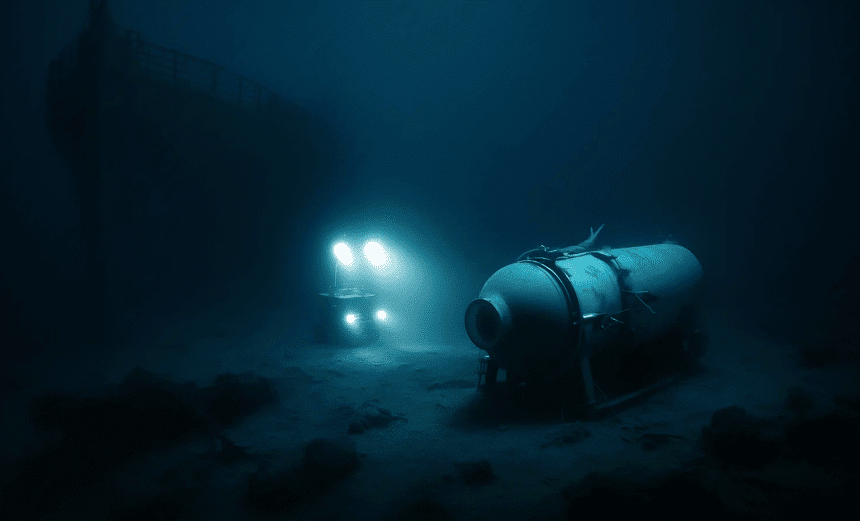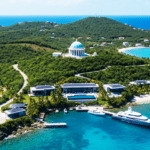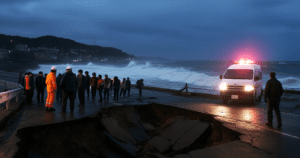The OceanGate submersible disaster has reignited a global conversation about the safety, oversight, and ethical boundaries of deep-sea tourism. On June 18, 2023, OceanGate’s Titan submersible vanished during a descent to the wreck of the Titanic in the North Atlantic Ocean, about 435 miles south of St. John’s, Newfoundland. The Titan lost communication with its support vessel, the MV Polar Prince, roughly 1 hour and 33 minutes into its dive. After four days of international search efforts, debris from the submersible was discovered near the Titanic’s resting place, confirming that the vessel had suffered a catastrophic implosion. All five people on board were killed instantly.
Those who lost their lives included OceanGate CEO and pilot Stockton Rush; Titanic expert Paul-Henri Nargeolet; British explorer Hamish Harding; Pakistani-British businessman Shahzada Dawood; and his 19-year-old son, Suleman Dawood. The incident not only devastated their families but also sent shockwaves through the adventure tourism industry. Questions soon arose about how a vessel carrying ultra-wealthy tourists to the ocean’s most extreme depths was allowed to operate without the basic certifications typically required in maritime engineering.
On August 5, 2025, the U.S. Coast Guard released its final report on the tragedy. The findings were damning, the Titan’s implosion was declared a preventable tragedy caused by design flaws, corporate negligence, and a complete disregard for international safety standards. The vessel’s unique carbon fiber and titanium construction was never independently tested or certified by recognized maritime bodies. Whistleblowers inside the company had warned of structural weaknesses as early as 2018, but those warnings were dismissed or silenced. The report stated that OceanGate fostered a dangerous work culture that discouraged dissent and overhyped the vessel’s capabilities.
Investigators also revealed that the Titan had previously experienced minor incidents, including sudden loud noises, problems with buoyancy, and erratic thruster behavior, but OceanGate continued operating without meaningful inspections or adjustments. The vessel was even stored outdoors in freezing Canadian conditions during winter, further degrading its structural materials. These oversights collectively contributed to the fatal implosion.
The incident has raised alarm bells over the booming industry of deep-sea tourism, where one seat aboard Titan costs $250,000. OceanGate’s ability to evade regulation by labeling passengers as “mission specialists” allowed the company to skirt safety laws and avoid third-party scrutiny. The final report issued 17 recommendations, urging international authorities to create licensing systems, mandatory certifications, and safety audits for all commercial submersible operations.
Following the report’s release, OceanGate formally shut down all operations and closed its offices in Everett, Washington. The victims’ families released emotional statements reiterating their loss, with many calling for global action to ensure no other families endure similar tragedies. Legal actions and public outcry have only grown louder, demanding accountability not just from OceanGate, but from governments that failed to act sooner.
The cultural impact of the disaster has also been profound. Documentaries, including Netflix’s Titan: The OceanGate Disaster, have explored the story in depth, drawing millions of viewers and increasing public awareness. While some industry figures defend the ambition behind deep-sea exploration, even they admit that OceanGate’s execution lacked transparency, responsibility, and respect for the limits of human-made technology.
The Titan disaster has triggered broader concerns about safety in adventure tourism. Earlier this year, a tourist submarine accident in Egypt’s Red Sea killed six people, reinforcing fears about regulatory gaps. As a result, countries are now under pressure to establish clear and enforceable rules before new tragedies occur. In sum, the OceanGate tragedy stands as a haunting reminder of what happens when ambition outpaces safety. The implosion at 3,800 meters was not only a physical collapse but also a collapse of ethics, regulation, and responsibility. Now, the world is being forced to reckon with the dangers of billion-dollar thrill-seeking ventures in Earth’s most unforgiving environments and to ask whether the ocean’s secrets are truly worth the human cost.
















